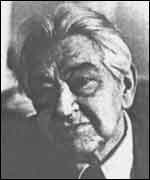 |
 |
 |
 |
Expertizing > Herbert Bloch Comments >The Four Phases of Stamp ExpertizationBy Herbert J. Bloch The following remarks by Herbert J. Bloch are taken from Mr. Bloch's address at The Philatelic Foundation' s ARIPEX Seminar , held in Phoenix, Arizona on January 19, 1984. Every effort has been made to adhere as closely as possible to Mr. Bloch's oral remarks with a minimum of editing. At the time, Mr. Bloch was Chairman of The Philatelic Foundation's Expert Committee. Ladies and gentlemen, I am sure that you all have come in touch with fakes or forgeries in one form or another. It is such a tremendous undertaking to speak about expertization that we can only scratch the surface of the problem today. But you can interrupt at any time because we cannot know what especially interests you. 
People are always under the impression that it is very difficult to expertize the very rare stamps, while the others are easy. Just the opposite is true. In the majority of the cases, the very, very rare stamps are the easiest to tell whether they are genuine or not. This is because there are only a few in existence, we have the records of nearly every one of them and in many cases, the photo. Let's say of five existing copies of any given rarity, we'd usually have photos of three. As an example of how easy it is to expertize rare stamps, I remember one case when Peter Robertson (Editor's Note: at the time, Senior Expert for the PF) came to me and asked, "Do you have any reference on the Ivory Coast Parcel Post, that very rare stamp?" (Editor's note: Scott #Q20, the 1903 1 fr. on 10c gray brown.) I told him (this was about ten years ago, or so), "That's the easiest stamp to expertize, because only one exists. It used to be in the Ferrari collection; I have a photo of it. I'll give you the photo, and you can look at it. If the stamp you are checking isn't the same, you've got a forgery, because out of the sheet of thirty the bottom right stamp was the one which is the very rare one. There cannot be a second one. It's not a question of maybe. This is an absolute fact." The interesting part, which shows how difficult it is to keep a reference collection intact, is that after ten years I haven't put those stamps back into my reference collection yet. Before I go into what they call the "four points" - which I pointed out one day without thinking they would make a big fuss about it afterwards - I want to say that there is one mistake which is made by many, many collectors, dealers, even experts. This is that they say, "The overprint must be fake because the overprint goes over the cancellation." I tell you - and you can say what you want - there is no possibility of telling whether this is the case. Whether the one goes above the other or vice versa is some form of an optical illusion caused by the light source. In fact, around 1944 to answer this question once and for all, they made enlargements 400 times normal, and even with the 400 times you could not tell whether the cancel went over the overprint, or vice versa. This is enough said for now on this common misconception about the surcharges. Types of ForgeriesOf course, when we speak about forgeries, we have to keep in mind that there are not only forgeries to defraud the philatelists, professional or otherwise, although these forgeries are by far the majority. There are also a goodly number of stamps which were made to defraud the postal authorities. We refer to them as "postal forgeries." In fact, they precede the forgeries of stamps for collectors by quite a few years. I would say to the best of my knowledge the first one forged is Spain, the six cuartos of 1850 (Editor's note: Scott #1), of which there is only one copy of the forgery known. It was printed in 1850 and in 1851 they had another issue, so it can only be printed in 1850. Other early postal forgeries are of Italian States, including Lombardy-Venetia. For instance, of the 45 centissimi of Lombardy-Venetia, the blue stamp (Editor's note: Scott #6), there are nine different postal forgeries known. France also has a lot of postal forgeries, Cuba has them, and Spain has not only the six cuartos but any number of postal forgeries. When we speak about forgeries this has nothing to do with value. A stamp that is a postal forgery, for example, can be extremely valuable. The next group of forgeries are those to defraud the collector. Then come the so-called "government" forgeries, which are interesting. We have, for instance, U.S. government forgeries. There are not too many government forgeries. The best known examples are Scott numbers 3 and 4. We call them Government Reproductions. Another government forgery is one that Japan did, which is in the book they issued in 1896, the Enkakushi book. They had all genuine stamps of the second issue, except two stamps, the middle ones (Editor's note: Scott #6 and 7, the 1s and 2s of 1872). They are scarce, but they are not good reproductions, while the U.S. #3 and 4 actually are very good reproductions in comparison. Another group of forgeries are the so-called "spy forgeries". I don't want to go into detail on these and take away the time of my colleagues here today. The Four Factors in ExpertizingI have found over a period of time that there are four points in expertizing. First, to expertize, you need theoretical knowledge. That means, you must know everything which is known about the stamp, from which plate it comes, which are the exceptions, etcetera. There are so many facets that it is really difficult to keep up with the knowledge of all those things. In a way, also it overlaps with our earlier discussion led by Richard Graham about reference literature, because without literature you would not be able to know all these things. The second point, and this one I've found is very valuable, is experience. It's what we call the school of hard knocks. You have to have handled the stamp many times so you know how it looks, you know the exceptions, etcetera, and this way you can come to a conclusion which is correct most of the time. The third point, I would say, is a reference collection. The Philatelic Foundation has a very good reference collection. The name explains what it means - it's a collection which is used to check stamps for genuineness, etcetera, especially by having the genuine ones in front of you. I would say that the majority of the mistakes are made by a lack of reference. Sometimes it's almost impossible to get. We brought along a few very small portions of reference collections that you can look at up front here. Another point, and this is the fourth point, is the use of scientific instruments. Actually, our gadgets start from a magnifying glass to the most elaborate and very expensive spectral-analytic instruments, and I'm sure in the future we will make advances. What is so difficult today is that we cannot date inks. Half the problems could be solved if we could date inks, even by fifty years. As far as magnifying glasses are concerned, there are some which are fifty cent glasses and good, but others, which are excellent ones, cost much more. The most interesting to me, and the most useful, is this magnifying glass. It's made from World War bomb sights. It has corrected lenses, and it would cost hundreds of dollars to manufacture today, because lenses like this are corrected all the way to the outside of the diameter. This glass is the best one I could find. You can drop it. I must have dropped it a hundred and fifty times, but that has no influence on it whatsoever. The only thing you have to be careful of is not to make any scratches on it. The Greatest ForgerNow, before I close this chapter and turn it over to Peter Robertson, I only want to mention there is one great forger, and he is the greatest forger by far of all times. That is Sperati. Peter will show some of Sperati's forgeries. He forged hundreds of stamps, and he is far ahead of any other forger. There are a few others who are good in one form or another, but none of them even approaches him. |
The Philatelic Foundation is located at 70 West
40th Street, 15th Floor, New York, NY 10018 Copyright 2005-2012 by The Philatelic Foundation, all rights reserved.
|
| Home | What's New | Expertizing | Why Expertize? | History | Educational Resources Publications | Who's Who | Become a Contributor | Contact The PF Application for a Certificate |